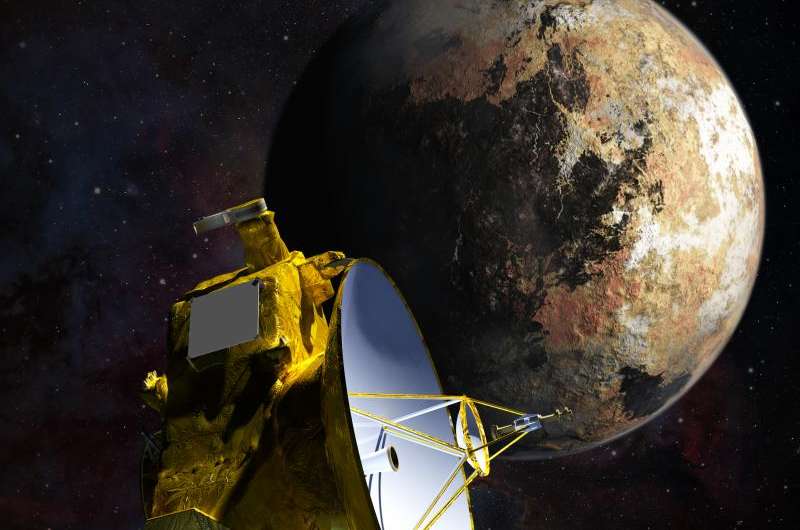NASA extends campaign for public to name features on Pluto

The public has until Friday, April 24 to help name new features on Pluto and its orbiting satellites as they are discovered by NASA's New Horizons mission.
Announced in March, the agency wants to give the worldwide public more time to participate in the agency's mission to Pluto that will make the first-ever close flyby of the dwarf planet on July 14.
The campaign extension, in partnership with the International Astronomical Union (IAU) in Paris, was due to the overwhelming response from the public.
"Due to increasing interest and the number of submissions we're getting, it was clear we needed to extend this public outreach activity," said Jim Green, director of NASA's Planetary Science Division at the agency's headquarters in Washington. "This campaign not only reveals the public's excitement about the mission, but helps the team, which will not have time to come up with names during the flyby, to have a ready-made library of names in advance to officially submit to the IAU."
The IAU is the formal authority for naming celestial bodies. Submissions must follow a set of accepted themes and guidelines set out by the IAU's Working Group for Planetary System Nomenclature. After the campaign concludes, NASA's New Horizons team will sort through the names and submit its recommendations to the IAU. The IAU will decide whether and how the names will be used.
The campaign allows the public of all ages to submit names for the many new features scientists expect to discover on Pluto following the encounter.
"I'm impressed with the more than 40,000 thoughtful submissions," said Mark Showalter, scientist New Horizons science team co-investigator, and SETI Institute in Mountain View, California, which is hosting the naming website. "Every day brings new lessons in the world's history, literature and mythology. Participation has come from nearly every country on Earth, so this really is a worldwide campaign."
New Horizons already has covered more than 3 billion miles since it launched on Jan. 19, 2006. Its journey has taken it past each planet's orbit, from Mars to Neptune, in record time, and now it's in the first stage of an historic encounter with Pluto that includes long-distance imaging, as well as dust, energetic particle and solar wind measurements to characterize the space environment near Pluto.
The spacecraft will pass Pluto at a speed of 31,000 mph taking thousands of images and making a wide range of science observations. At a distance of nearly 4 billion miles from Earth at flyby, it will take approximately 4.5 hours for data to reach Earth.
Provided by NASA





















